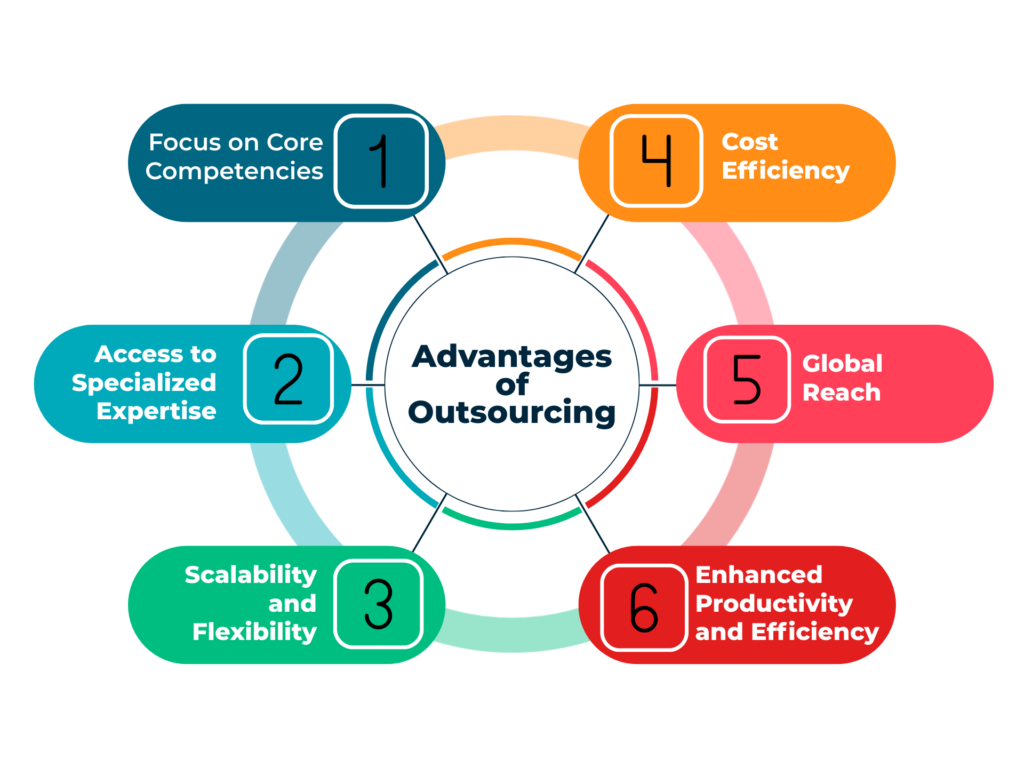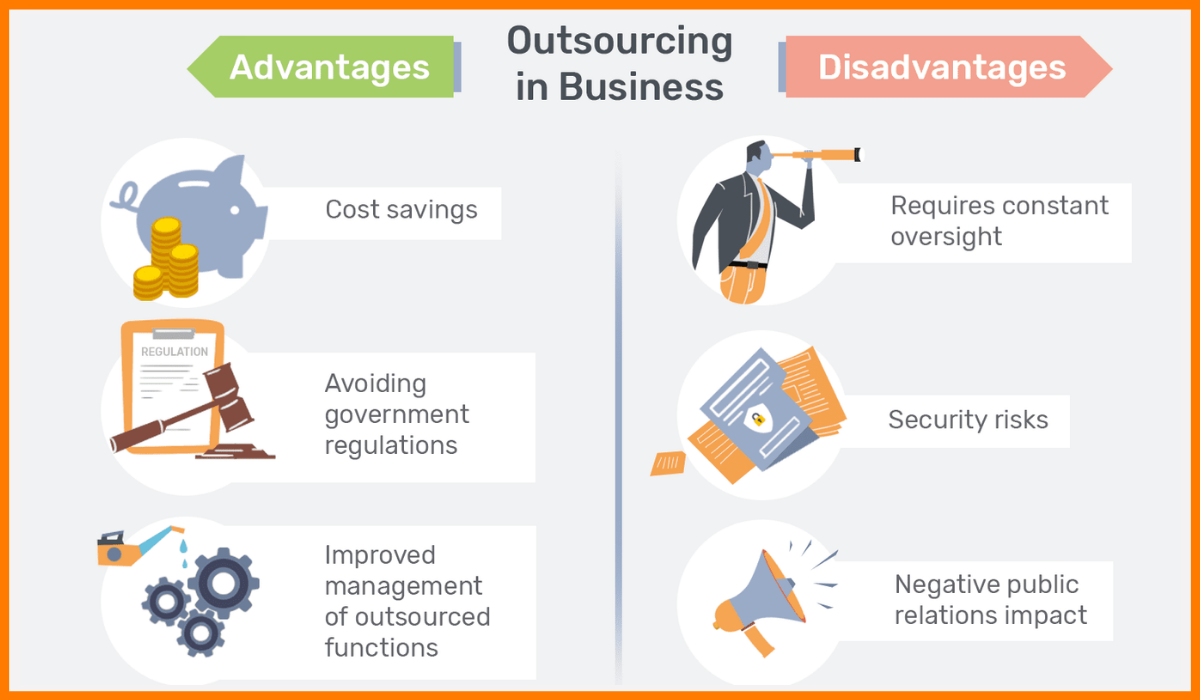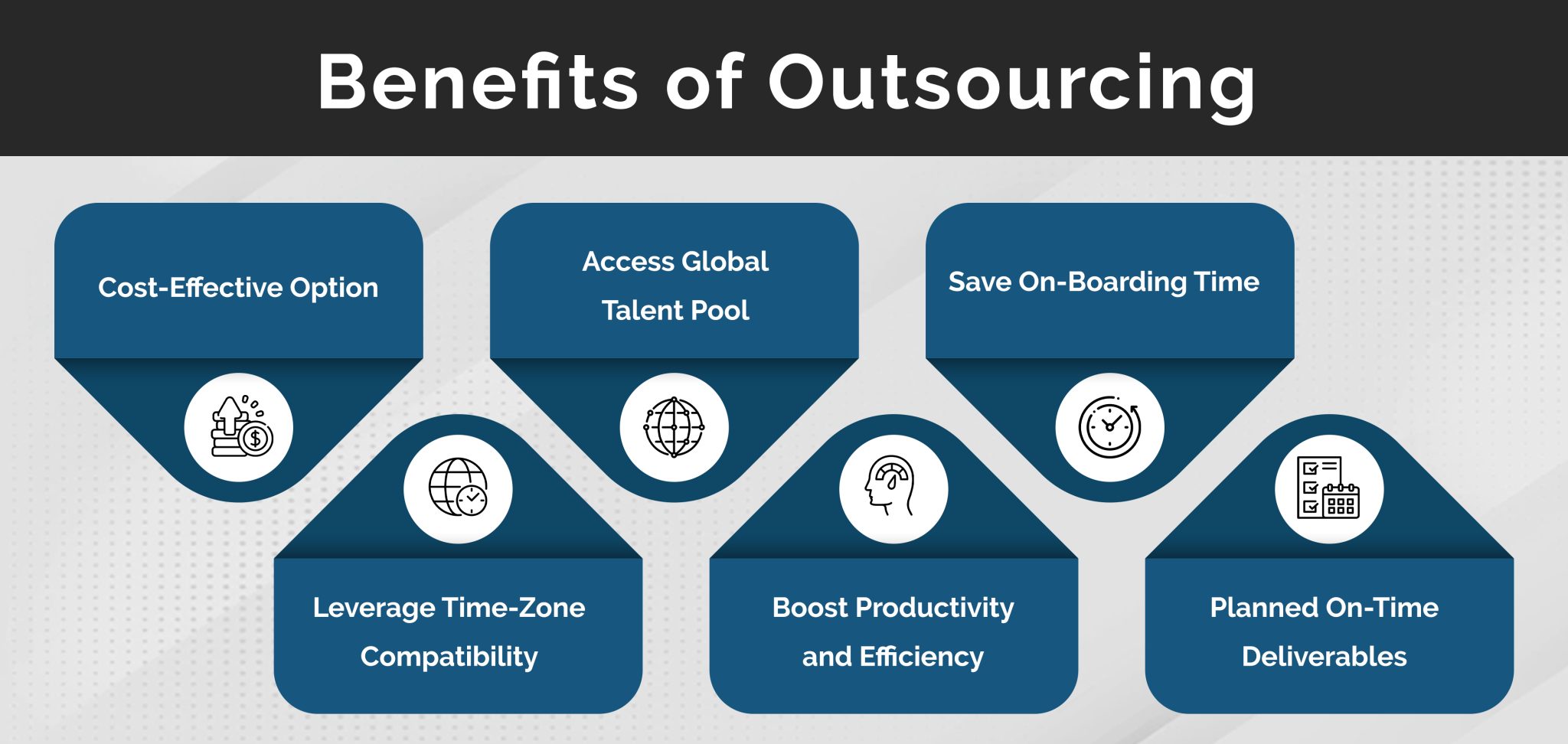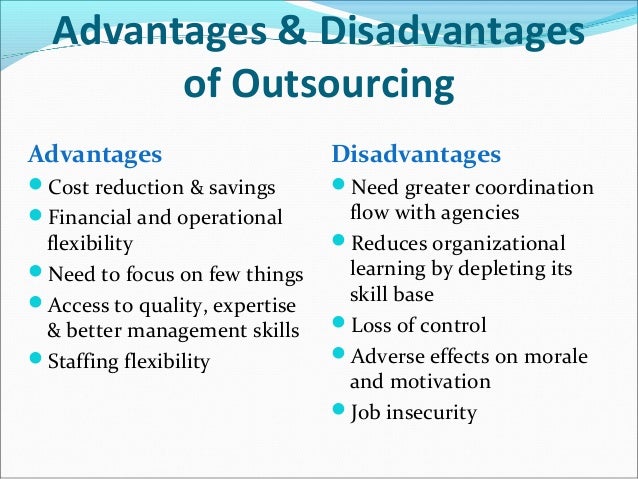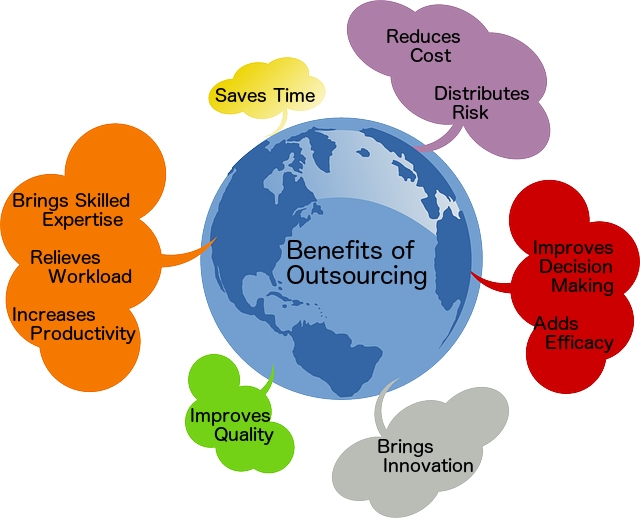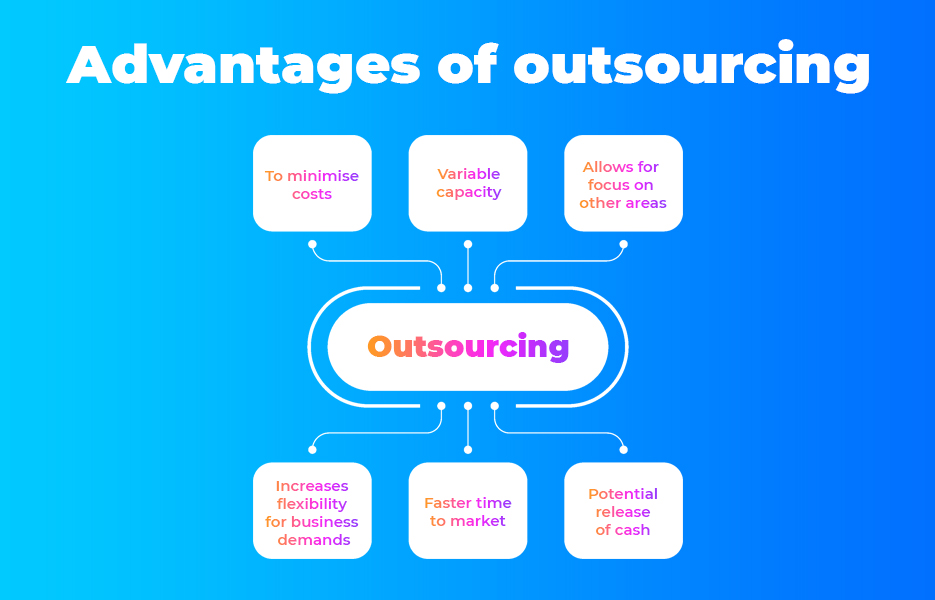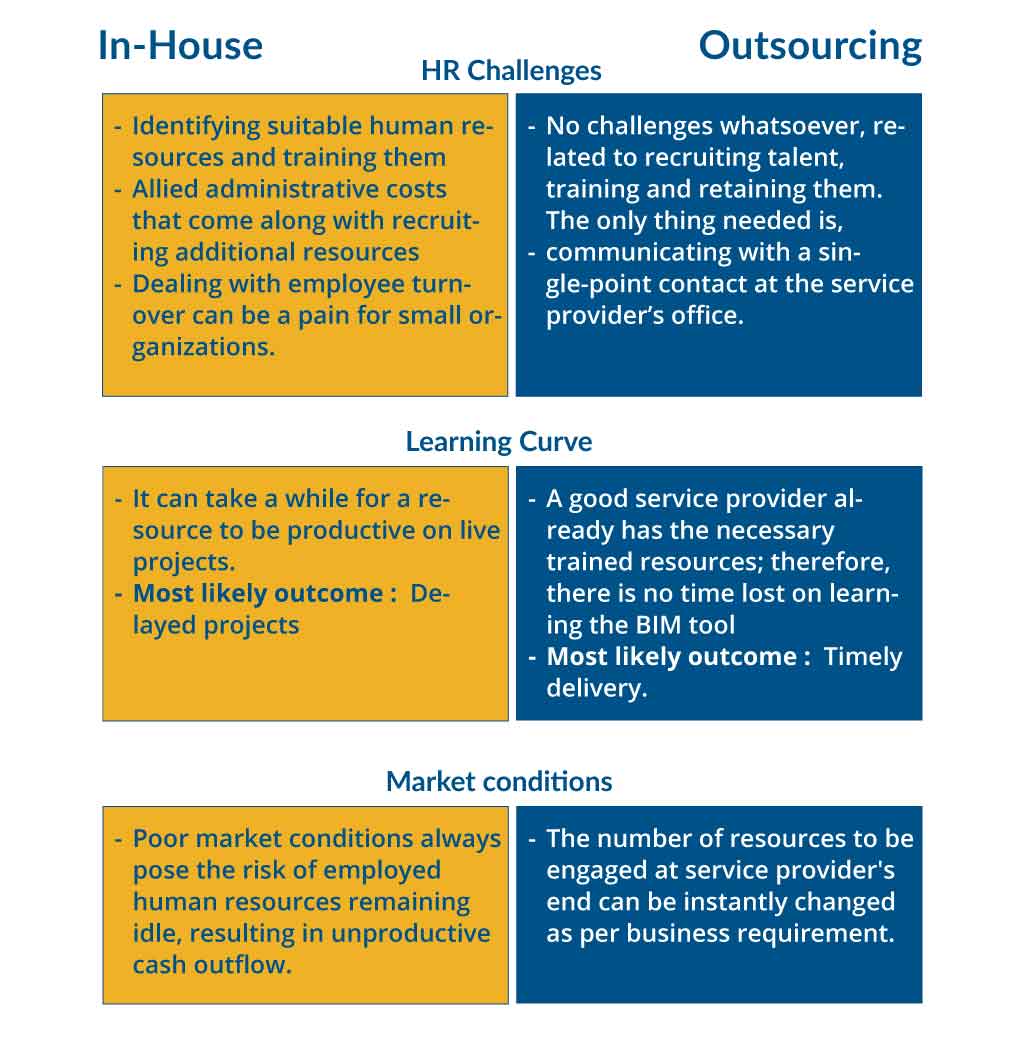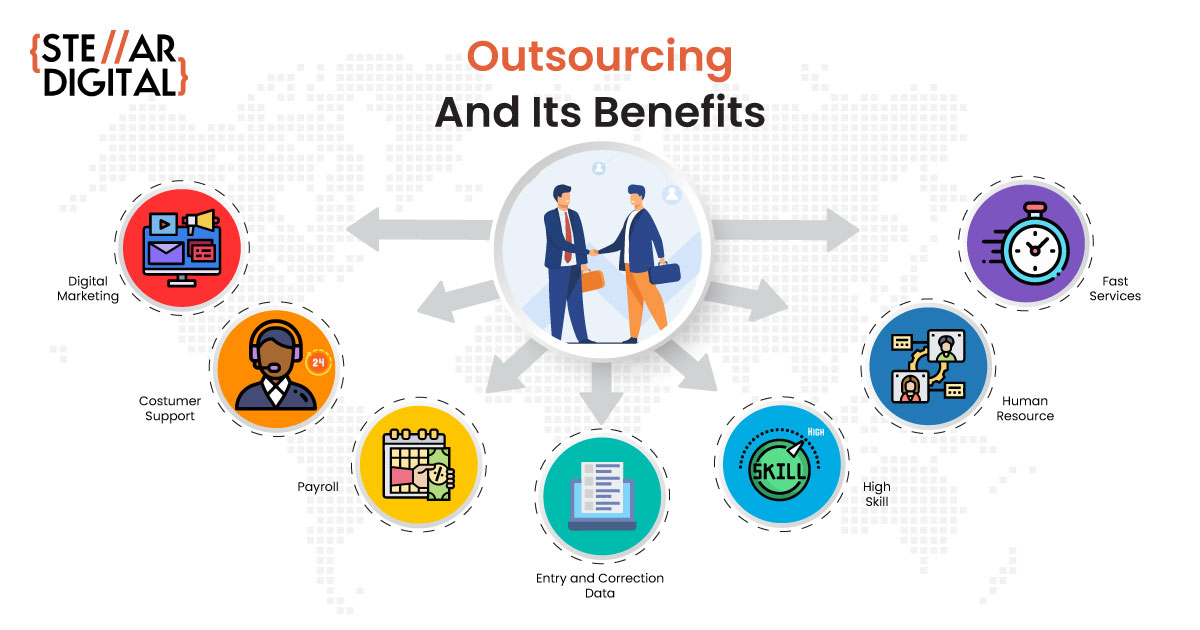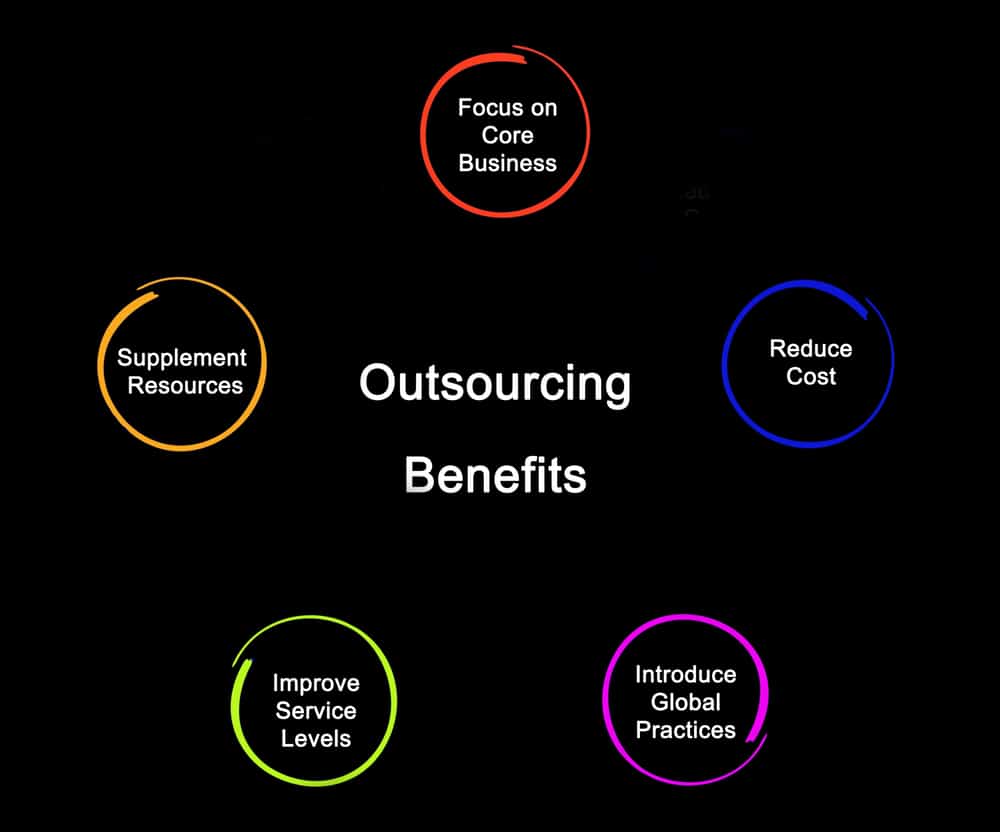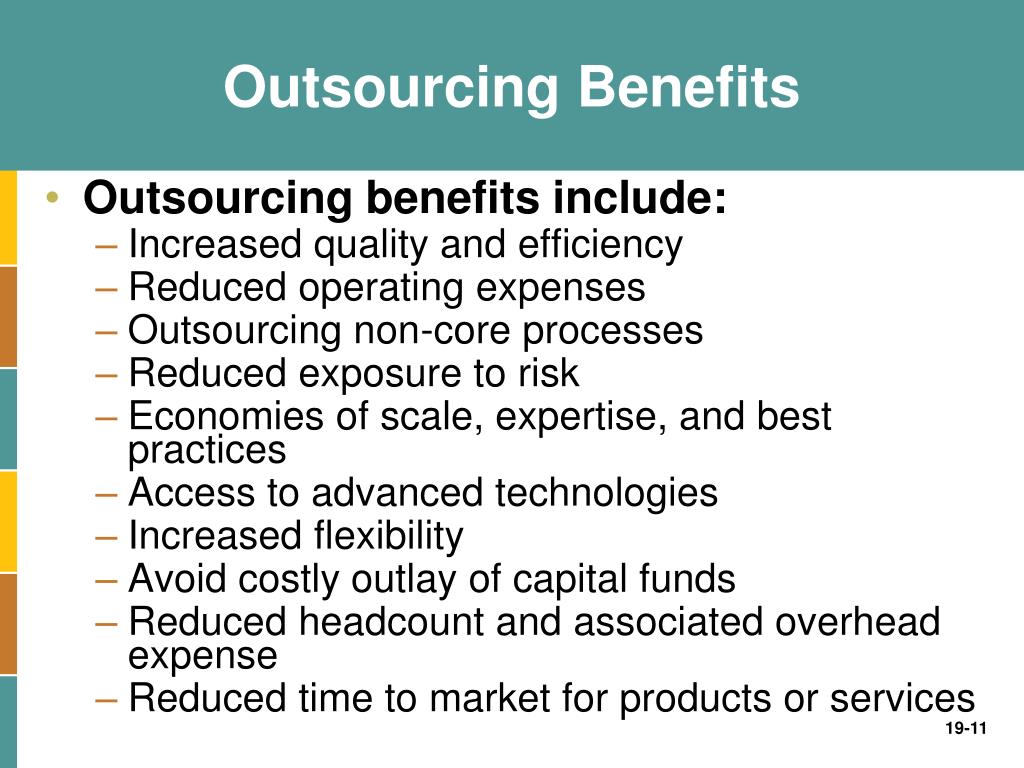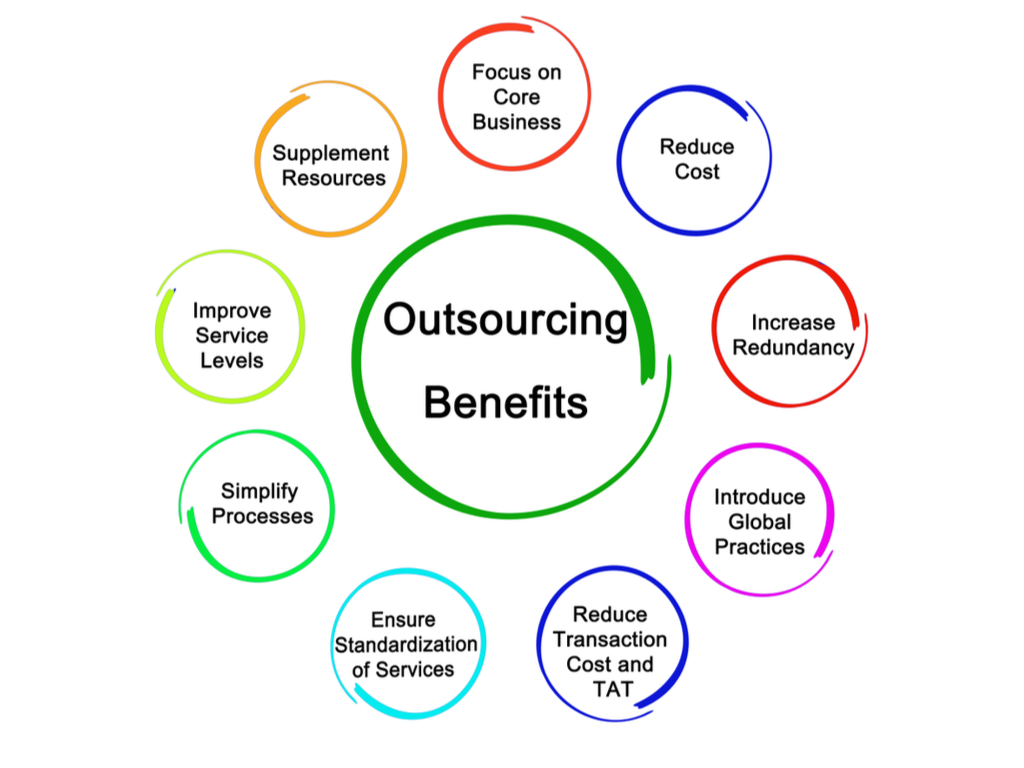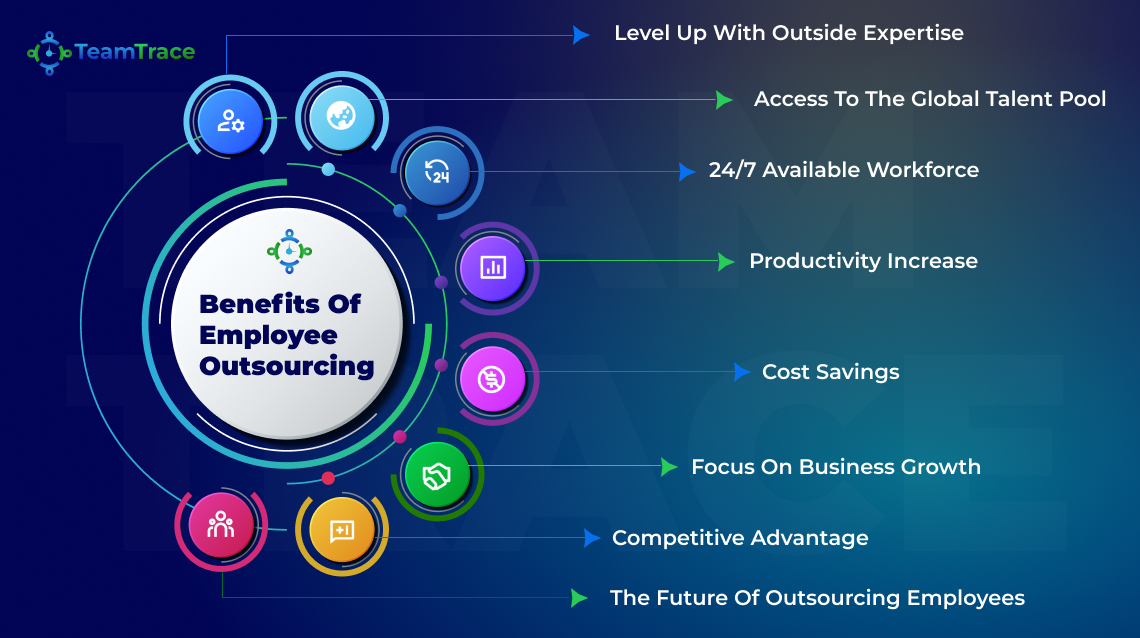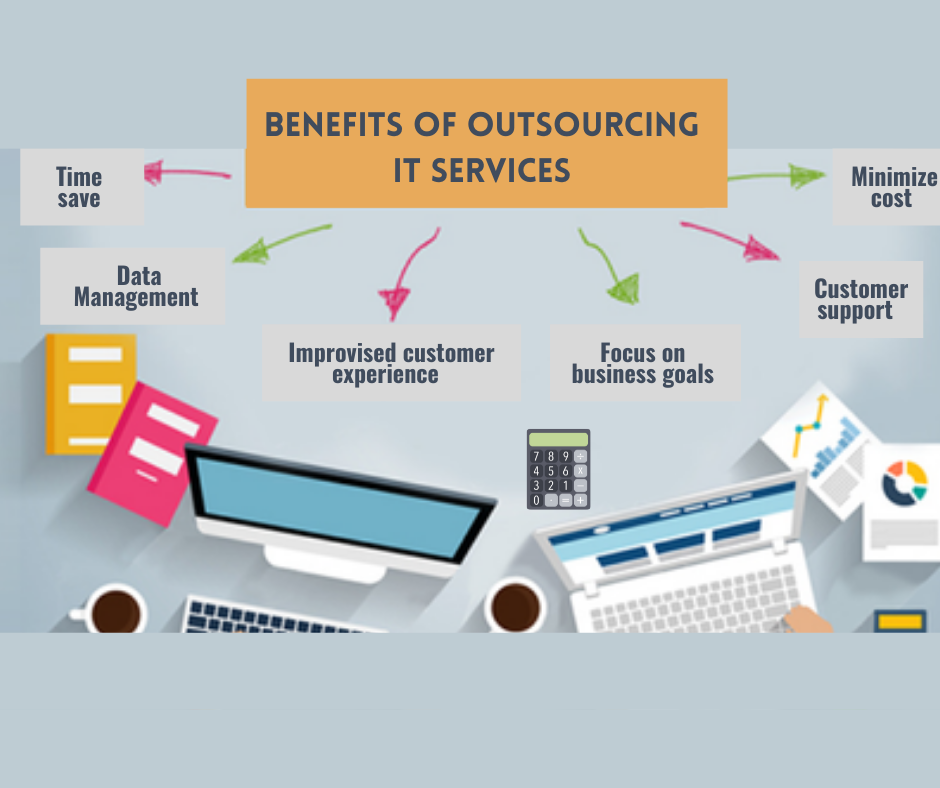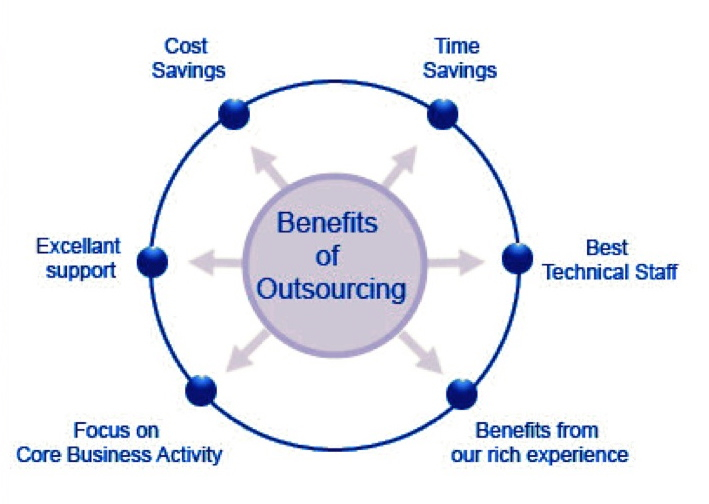Which Of The Following Is Not A Benefit Of Outsourcing
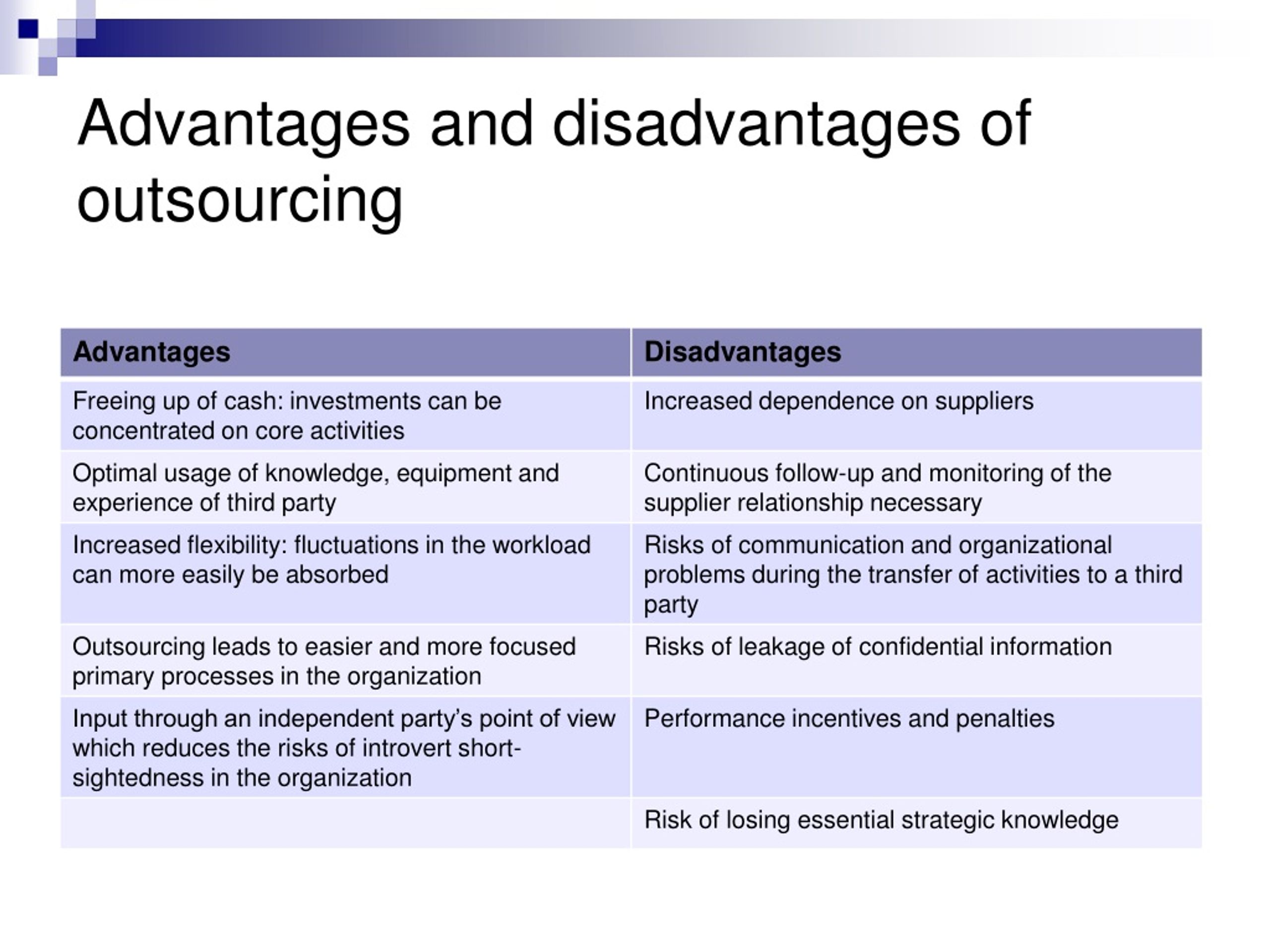
In today's globalized economy, outsourcing has become a ubiquitous business strategy. Companies large and small are increasingly relying on external providers for various functions, from manufacturing and IT support to customer service and human resources. However, the rush to outsource often overlooks a critical question: what are the potential downsides?
While cost reduction and increased efficiency are often touted as primary benefits, outsourcing isn't a panacea. Understanding the nuances and identifying pitfalls is crucial for businesses considering this strategic move. Misguided expectations can lead to significant problems, ultimately impacting profitability and overall competitiveness.
Understanding the Realities of Outsourcing
Outsourcing is essentially the delegation of specific business processes to a third-party provider, either onshore, nearshore, or offshore. The primary motivation is frequently to reduce operational costs by leveraging lower labor rates in other regions.
Another key driver is access to specialized expertise. This allows companies to focus on their core competencies while leaving specialized tasks to experts in those areas. In theory, this enhances efficiency and innovation.
The Perceived Benefits: Myth vs. Reality
Many businesses believe outsourcing automatically guarantees certain outcomes, yet that is not always the case. Let's examine some common assumptions. Reduced operating costs, while often achievable, aren’t always guaranteed.
Hidden costs, such as transition expenses, contract negotiation fees, and communication barriers, can erode savings. According to a Deloitte survey, around 70% of companies cite cost reduction as a primary outsourcing driver, however, many underestimate the comprehensive costs.
Access to specialized skills is another often-cited advantage. However, finding the right provider with the necessary expertise requires due diligence. A mismatch between the outsourcer's skills and the company's needs can lead to poor quality work and project delays.
The Pitfalls: What Outsourcing Doesn't Guarantee
While advantages like cost savings and efficiency improvements are frequently promoted, a critical examination reveals elements that outsourcing cannot ensure. One major misconception is that outsourcing guarantees complete control over the outsourced processes.
In reality, handing over functions to a third party often means relinquishing direct oversight. This can lead to a loss of control over quality, data security, and compliance. The Ponemon Institute estimates that data breaches in outsourced environments are on the rise.
Another fallacy is that outsourcing automatically leads to increased innovation. While outsourcing can provide access to new technologies and expertise, it doesn't guarantee that those resources will translate into innovative products or services.
Communication and Cultural Barriers
Communication breakdowns can severely impact the success of outsourcing initiatives. Language barriers, time zone differences, and cultural nuances can lead to misunderstandings and delays.
These challenges often necessitate significant investment in communication infrastructure and cultural sensitivity training. A study by Kearney found that inadequate communication is a leading cause of outsourcing failures.
Data Security and Compliance Risks
Entrusting sensitive data to a third-party provider exposes a company to potential security breaches and compliance violations. Maintaining data privacy and adhering to regulations like GDPR and HIPAA can become more complex when outsourcing.
Therefore, robust security protocols and stringent contractual agreements are crucial. A PwC report indicates that data security remains a top concern for companies considering outsourcing.
Beyond the Hype: A Balanced Perspective
Outsourcing is a strategic tool that, when used wisely, can deliver significant benefits. However, it is not a silver bullet.
Companies need to carefully assess their needs, conduct thorough due diligence, and establish clear communication channels with their outsourcing partners. Developing robust risk management strategies is also crucial for mitigating potential downsides.
The key lies in understanding that outsourcing is a partnership, not simply a transactional relationship. Continuous monitoring and evaluation are essential for ensuring that the outsourcing arrangement continues to deliver the desired outcomes.
The Future of Outsourcing
The outsourcing landscape is constantly evolving, driven by technological advancements and changing business needs. Emerging trends like robotic process automation (RPA) and artificial intelligence (AI) are transforming the way companies approach outsourcing.
These technologies are automating routine tasks, improving efficiency, and reducing costs. As outsourcing becomes more sophisticated, the ability to effectively manage and monitor outsourced processes will become even more critical.
Ultimately, the success of outsourcing depends on a clear understanding of its limitations and a proactive approach to managing its risks. Blindly assuming guaranteed benefits without careful planning and execution is a recipe for failure.
